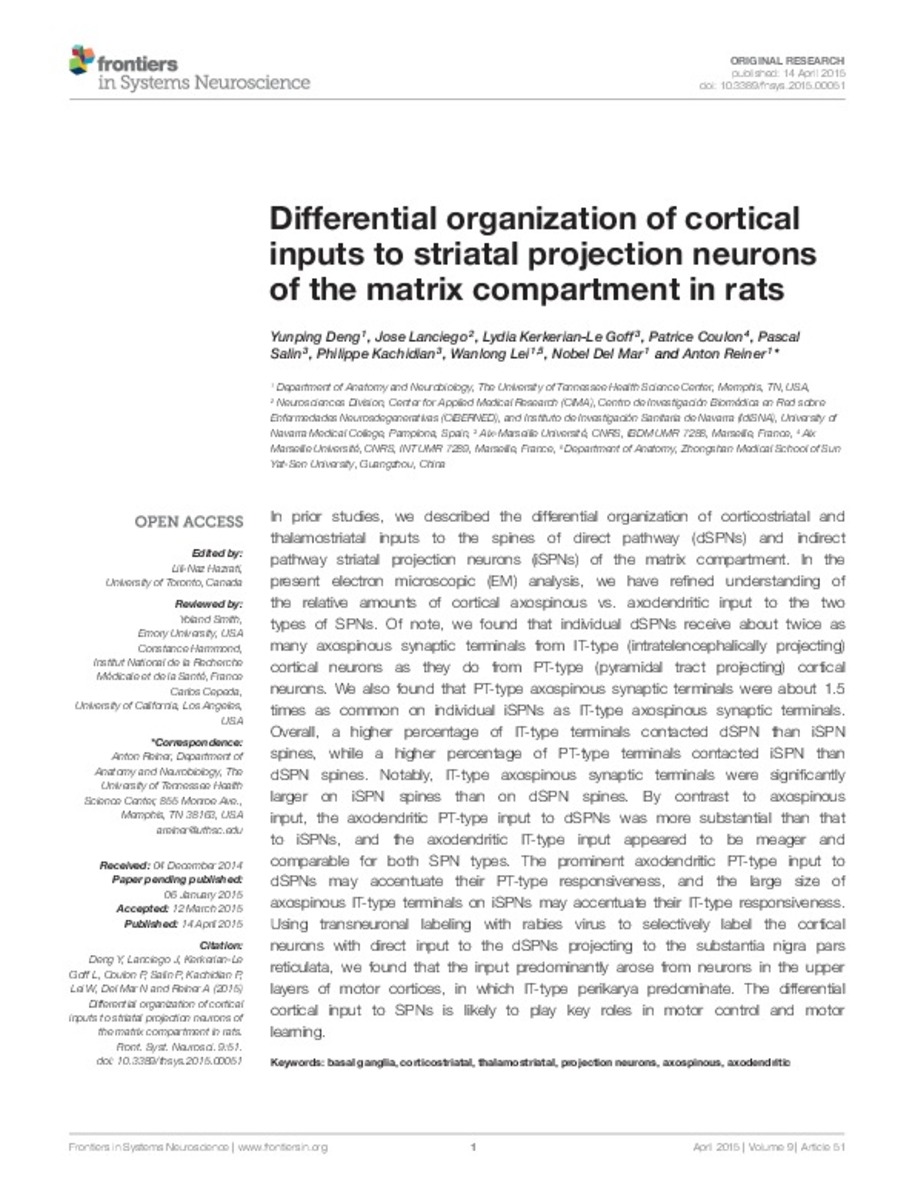Differential organization of cortical inputs to striatal projection neurons of the matrix compartment in rats
Keywords:
Basal ganglia
Corticostriatal
Thalamostriatal
Projection neurons
Axospinous
Axodendritic
Citation:
Deng Y, Lanciego J, Goff L.K, Coulon P, Salin P, Kachidian P. et al. Differential organization of cortical inputs to striatal projection neurons of the matrix compartment in rats. Front Syst Neurosci. 2015 Apr;9:51.
Statistics and impact
0 citas en

0 citas en

Items in Dadun are protected by copyright, with all rights reserved, unless otherwise indicated.







